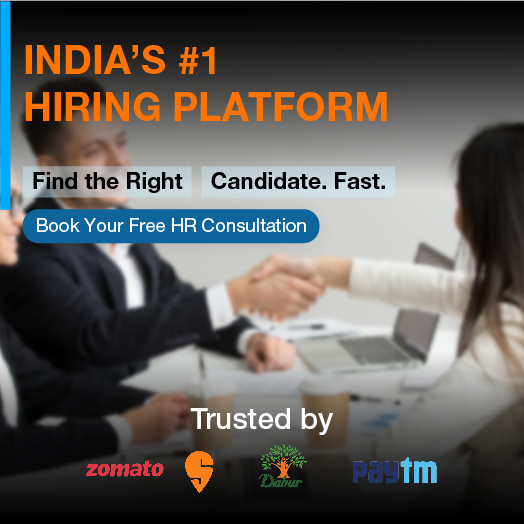
What is Staff Augmentation? How can it Benefit Your Team
- Our Subject Matter Experts
- September 6, 2024

Introduction
As a corporate employee, have you always had more on your plate than you can consume? Yes, we are often overburdened by work, and a manager calls us at odd hours asking us to submit some reports. The managers are also under pressure as they work throughout the day and even at night to complete deadlines. Traditionally ideal workers, according to the Harvard Business Review, were known as people prioritizing their jobs by sacrificing specific personal needs. For instance, as employees, if we have a hobby, we might forget about that aspect of our lives and give everything to our jobs. It is considered dysfunctional, and today the new workforce demands a balance of both personal and professional. Staff augmentation is an essential strategy in Staffing Process by which a company takes care of the well-being of its members so that they can retain and upgrade their talent.
What is Staff Augmentation?
Suppose you have a large workforce and a high-intensity workplace with several deadlines and piles and piles of work. You must understand that you must gain the skills despite having a large workforce to support the demand. The key is not to fire the people but to upskill your current employees. Many temp India staffing service and i utilize staff augmentation.
You can employ as many skilled professionals as possible to handle a particular project. This way, your current staff will be relieved of the stress and can devote themselves to training to upgrade themselves to handle such projects. Top contract staffing companies in India also provide training that clients can utilize to offer customizable training methods that will reduce the skill gap in the company. When it comes to managing, managed service providers in India will also look after the employee life cycle, which includes payroll management and other formalities concerning their engagement with the company.
7 Types of Staff Augmentation Services
Importance of Staffing cannot be overlooked when discussing Staff augmentation services it is integral Types of Staffing Services, and come in various types, to cater to the diverse needs of businesses, for example industrial staffing services. Some common types include:
1. Technical Staff Augmentation :
This type focuses on providing skilled professionals with expertise in specific technologies or programming languages. These professionals are typically hired to work on short-term projects or to fill skill gaps within existing teams.
2. Project-Based Staff Augmentation :
In this model, staff augmentation services are utilized for the duration of a specific project. Companies can hire additional resources with the required skills to augment their existing teams and successfully complete the project on time and within budget.
3. Long-Term Staff Augmentation :
Unlike project-based augmentation, long-term staff augmentation involves additional hiring process resources for an extended period, often to support ongoing operations or to address persistent skill shortages within the organization.
4. Onshore, Nearshore, and Offshore Staff Augmentation :
These types refer to the location of the augmented staff relative to the client’s location. Onshore staff augmentation involves bulk hiring resources from the same country or region as the client, nearshore involves hiring from nearby countries or regions, and offshore involves hiring from distant locations.
5. Specialized Staff Augmentation :
This type focuses on providing professionals with specialized skills or domain expertise in niche areas such as cybersecurity, cloud computing, data analytics, or artificial intelligence. These professionals bring specific knowledge and experience to address complex technical challenges.
6. Flexible Staff Augmentation:
Flexible staff augmentation services allow companies to scale their workforce up or down based on fluctuating demand or project requirements. This Characteristics of Staffing Services, enables organizations to adapt quickly to changing market conditions without the overhead of maintaining a full-time workforce.
7. Strategic Staff Augmentation :
In this model, staff augmentation services are aligned with the organization’s strategic objectives. The augmented staff are not just hired to fill immediate needs but are selected and trained to contribute to the long-term growth and success of the organization.
These are just a few examples of the types of staff augmentation services available in the market. It is a Functions of staffing that offers unique benefits and caters to specific business requirements, allowing organizations to leverage external resources effectively to achieve their goals.
How to Choose the Right Staff Augmentation Model?
Choose the Right staff Augmentation Model
Leverage our staff augmentation services to seamlessly fill skill gaps and manage project workloads with top talent now!
Choosing the appropriate staff augmentation model is crucial for maximizing the benefits of augmenting your workforce. Here are some factors to consider when selecting the right model:
• Assess Your Needs : Start by assessing your organization’s specific needs and goals. Determine whether you require short-term support for a specific project, long-term assistance to address skill gaps, or specialized expertise in niche areas. Understanding your requirements will help you narrow down the available options.
• Evaluate Project Scope and Duration : Consider the scope and duration of the project or tasks you need assistance with. For short-term projects with defined timelines, project-based staff augmentation may be suitable. For ongoing operations or persistent skill shortages, long-term augmentation might be more appropriate.
• Consider Budget and Cost Efficiency : Evaluate your budget constraints and the cost-effectiveness of each augmentation model. While onshore augmentation may offer advantages in terms of communication and cultural alignment, offshore or nearshore options might be more cost-effective for certain projects.
• Assess Skill Requirements : Identify the specific skills and expertise required to successfully complete your projects or address skill gaps within your organization. Choose a staff augmentation model that provides access to professionals with the necessary technical knowledge and experience in your industry.
• Review Provider Reputation and Expertise : Research and evaluate staff augmentation providers based on their reputation, track record, and expertise in your industry. Look for providers with a proven record of delivering high-quality talent and excellent customer service.
• Consider Cultural Fit and Communication : Assess the cultural fit and communication abilities of the augmented staff relative to your organization. Effective communication and alignment with your company’s values and culture are essential for seamless collaboration and project success.
• Flexibility and Scalability : Choose a staff augmentation model that offers flexibility and scalability to accommodate changing business needs and fluctuating demand. A model that allows you to scale your workforce up or down quickly will enable you to adapt to evolving requirements without disruption.
• Seek Client References and Feedback : Request client references and feedback from previous clients of the staff augmentation provider to gain insights into their experiences and satisfaction with the service. Positive testimonials and referrals can help you make an informed decision.
Conclusion
In 2024 managing the workforce is to prioritize well-being and employee engagement. These will be the key to developing a competitive advantage and ensuring fair employability in an organization. Understanding what you need and then taking action to reduce disagreements will mitigate risks and failures in your organization. Staff augmentation can help in overall improvement of staffing.
FAQs Related to Staff Augmentation
Why do you need staff augmentation?
Staff augmentation helps fill skill gaps and meet project demands without long-term commitments.
What benefits does staff augmentation offer?
Staff augmentation offers flexibility, scalability, and access to specialized skills.
Is staff augmentation the best method for outsourcing talent?
It depends on the project's requirements and the desired level of control over the workforce.
When is staff augmentation necessary?
Staff augmentation is necessary when you need additional resources for short-term projects or lack specific expertise internally.
What is staff augmentation vs. managed services?
Staff augmentation provides extra workforce capacity, while managed services offer complete outsourcing of specific functions.
How does staff augmentation differ from traditional hiring?
Staff augmentation provides temporary skilled resources without the need for permanent employment contracts.







